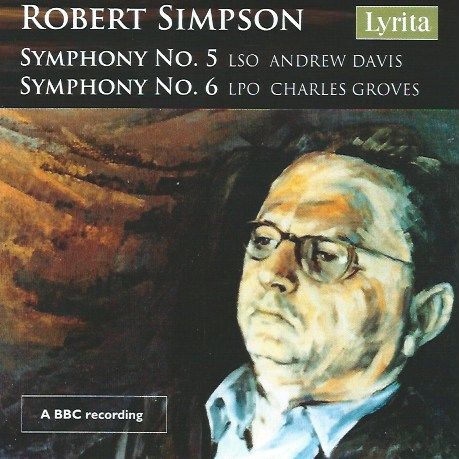Robert Simpson's Fifth and Sixth Symphonies
Robert Simpson's symphonies have long had a small but die-hard following who, rightly, believed in their greatness ...

Robert Simpson's symphonies have long had a small but die-hard following who, rightly, believed in their greatness. While Hyperion's recorded cycle with Vernon Handley has performed a massive service to the Simpson discography, it is to the ever-enterprising Lyrita company that we turn for true authentic gold. Here we a centenary release (Simpson's dates are 1921-1997) offering the premieres of both Simpson's Fifth and Sixth Symphonies, both live form the Royal Festival Hall in London.
The Fifth's premiere occurred on May 3, 1973, with the London Symphony Orchestra under Andrew Davis. The score was pretty hot off the press: Simpson wrote the Fifth in 1972. The frisson of this performance is remarkable, the power undeniable, whether in the near-inaudible frozen chords of the beginning, or the near-Ivesian riot of the third movement (of five: the third is modestly labelled 'Scherzino'). The conflict between counterpoint (the two movements that frame the Scherzino are called 'Canone' 1 and 2) and stasis is a major component of the work's dynamic. The overall sound world is unique, although it will come as no surprise to anyone who hears this to learn that Simpson was a fierce supporter of the works of Havergal Brian. The sheer physicality of the music is awe-inspiring, as is the sense of aliveness. When the music dances, as it can in the fifth and final movement, it does so unstoppably.
The first movement is astonishing: from the frozen stasis of its opening comes a premonition of that Ivesian Scherzino; listen out for a side-drum that seems to be influenced by Nielsen:
The symphony is nicely symmetrical, the two weighty outer movements balancing out nicely, the second and fourth both marked "Canone" with that Scherzino right at the centre. Andrew Davis' performance with the London Symphony Orchestra has the whiff of fresh paint about it; one senses the excitement of premiering such a recent and clearly significant work.
You can find a detailed analysis of the Fifth Symphony here (starting page 8).
The Sixth Symphony also nods to Nielsen, but more in its melodic profile.Written in 1977, this is more even temperamentally than the Fifth Symphony. Formally, it is different, too, cast in only two movements. This time it was Sir Charles Groves in charge of the London Philharmonic Orchestra that did the honours. Apparently the symphony was suggested by a gynaecologist friend of the composer's, who compared symphonic structure to the growth of a human from a tiny germ cell. Midway through the symphony there is a "great upheaval we might liken to a kind of birth" (in the composer's own words) ; the music then moves to a symphonic end apparently in the prime of life.
While the composer might have had his reservations about Groves' premiere (reproduced in the booklet), there is no doubting either the documentary value of this, nor the actual torrent of energy unleashed. Simpson was to subsequently revise the symphony.
There are superb notes on both pieces by Jürgen Schaarwächter, Chairman of The Robert Simpson Society
The disc is available at Amazon (below, an affiliate link) or on the Nimbus Records website.
